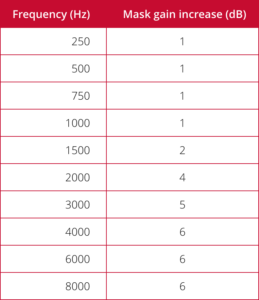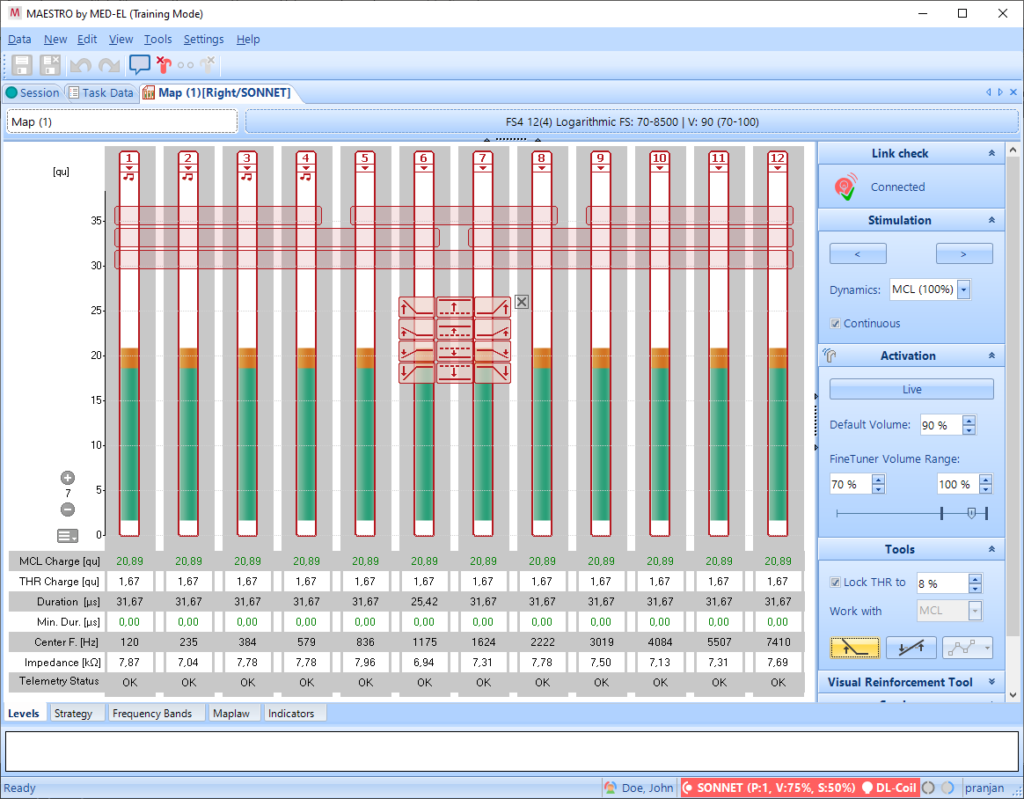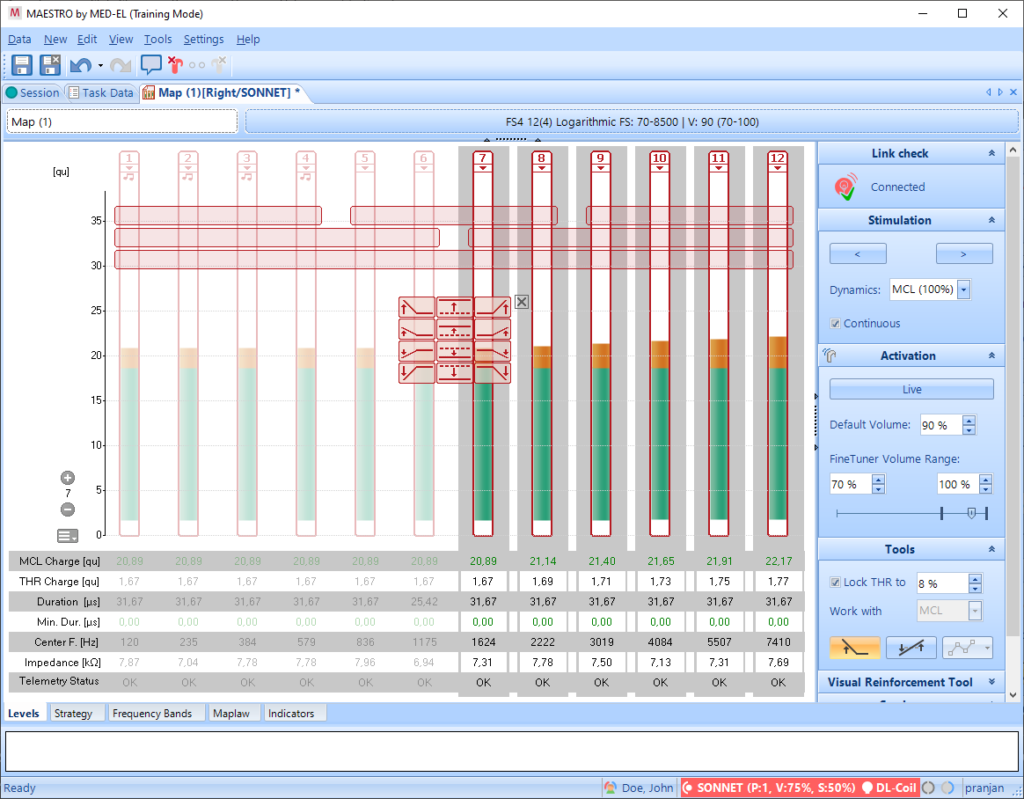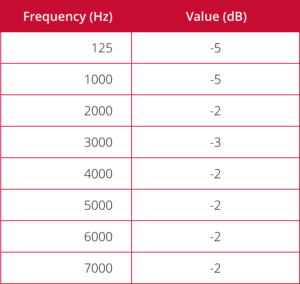MED-EL
Published Jun 17, 2021
Mitigating the Acoustic Impact of Face Masks With Hearing Implant Mapping

To deter the spread of SARS-CoV-2, or coronavirus, many governments and health authorities have called for the wearing of face masks. While the situation has recently improved and face mask requirements have eased in some countries, one thing is certain: COVID-19 has made the wearing of face masks a normal part of everyday life for billions of people, especially in clinical settings and when infection rates are high.
Whether it’s at the grocery store checkout or ordering a meal at a restaurant, everyone has experienced how difficult it is to understand speech when using a face mask. It’s no surprise to audiologists and hearing professionals that individuals with hearing loss have been impacted more than others. While the start of face mask requirements has been a turning point for some people to seek treatment for their hearing loss, most individuals with hearing loss—including hearing implant recipients and those with hearing aids—have reported a negative impact on their communication.
“In my own practice, patients report to me on a daily basis that communication has been significantly impaired because of face masks. Not only can they not see people’s faces, but sound is muffled, making it very difficult to understand speech, even in the best listening scenarios,” said Cache Pitt, Audiologist and Clinical Associate Professor at Utah State University. It’s precisely this double challenge presented by face masks—namely, that the facial expressions and lips of speakers are covered and the sound coming from them is altered—that makes face masks especially challenging for individuals with hearing loss.
How Face Masks Transform the Sound of Voices
Not only do non-transparent face masks impede listeners from picking up on visual cues or reading lips, face masks also attenuate the high frequencies of speech (2000-7000 Hz) with the level of attenuation varying from 3 to 12 dB depending on the type and thickness of the face mask worn.[1] FFP2/N95/KN95 masks that are thicker tend to result in higher levels of attenuation, whereas simple medical masks or those that consist of a single layer of cloth likely result in lower attenuation levels.[1]
The reduced speech levels that result can affect the audibility of important speech cues and interfere with listeners’ understanding of speech. In response to the global coronavirus pandemic, the National Acoustic Laboratories (NAL) published recommendations to help wearers of hearing aids by providing them with a “face mask program” (or map) that “increases gain to compensate for the reduced speech levels of the talker wearing the mask”.[2]
A “Face Mask Program” for Hearing Device Users
A small group of audiologists and hearing professionals at MED-EL have collaborated to translate the NAL recommendations for hearing aids into mapping modifications for hearing implant and ADHEAR users. The aim was to see if users may benefit from having a “face mask program” to use in their everyday lives, especially when many speakers around them are wearing face masks.
While the suggestions which follow may serve as a good starting point, clinical judgment and some trial and error may be necessary due to variability among masks and speakers. Furthermore, you might need to counsel the recipient that the face mask program may only be helpful when listening to masked speech and may sound unpleasant or distorted when listening as normal. Therefore, the original program should be retained. Please note that these recommendations are preliminary and may not be of benefit to all users.
Mitigating the Acoustic Impact of Face Masks for Cochlear Implant Recipients
The table below summarizes the NAL recommendations for hearing aid gain adjustments that may help overcome the negative impacts of speech understanding from the acoustic interference introduced by face masks.[2]

Figure 1: Hearing Aid Gain Adjustments (Source: NAL)
To apply these gain adjustments to MED-EL devices including cochlear implants, hearing healthcare practitioners should copy the primary program settings into a special face mask program and then:
- Apply the adjustments as best as they can, given the capabilities of the fitting software and the audio processor.
- Ensure that the increases do not cause uncomfortable loudness for sounds other than masked speech.
- Ensure that the increases don’t introduce sound quality issues.
- Enable directionality and noise reduction settings in this face mask program, which will reduce the loudness of environmental sounds heard while using the mask program.
- Apply any other best practices and clinical/audiological expertise used when making audio processor adjustments to ensure the safety and satisfaction of the audio processor wearer.
To implement these recommendations in the MAESTRO fitting software, make the following increases to MCL to compensate for reduced speech acoustics.
 Figure 2: Universal Program in the MAESTRO Fitting Software (Source: MED-EL)
Figure 2: Universal Program in the MAESTRO Fitting Software (Source: MED-EL)
 Figure 3: Face Mask Program in the MAESTRO Fitting Software (Source: MED-EL)
Figure 3: Face Mask Program in the MAESTRO Fitting Software (Source: MED-EL)
- Select the six channels for the basal region. Perform x2 small-step ‘basal shifts’.
- Enable directionality and noise reduction settings in this face mask program, which will reduce the loudness of environmental sounds.
- Increasing volume may also be helpful. Some ‘sensitive’ users may report discomfort to this small change which may be handled clinically based upon user feedback.
As previously mentioned, it may be important to point out to the recipient that this program may only be helpful when listening to masked speech and may sound unpleasant or distorted when listening as normal. For this reason, the original program should be retained for these situations.
Consider this as an option for one map:

Figure 4 (Source: MED-EL)
For VIBRANT SOUNDBRIDGE and BONEBRIDGE
For VIBRANT SOUNDBRIDGE and BONEBRIDGE, the recommendations from NAL can be applied one to one. Go to the Frequency Shaping tab and increase the volume according to Figure 1 (above).

Figure 5 Universal Program (Source: MED-EL)

Figure 6 Face Mask Program (Source: MED-EL)
Enable directionality and noise reduction settings in this face mask program (if available for the processor), which will reduce the loudness of environmental sounds heard while using the mask program.

Figure 7 Universal Program (Source: MED-EL)

Figure 8 Face Mask Program (Source: MED-EL)
For ADHEAR
To recreate the recommendations from NAL in ADHEAR’s Configuration Software, follow these steps.
First change the VC Startup to 0 dB and select “Directional” as the input mode in the “Basics” tab.

Figure 9 Default Settings for ADHEAR (Source: MED-EL)

Figure 10 Face Mask Program for ADHEAR (Source: MED-EL)
Additionally, select the following settings in the Equalizer tab (see Figure 13 below):

Figure 11 Default Settings for ADHEAR (Source: MED-EL)

Figure 12 Face Mask Program for ADHEAR (Source: MED-EL)

Figure 13 Equalizer Settings for ADHEAR (Source: MED-EL)
The Face Mask Program: A Case Study
One parent of a cochlear implant recipient agreed to try out the new face mask program with their child. After several weeks, the parent indicated that their child reported an improvement from, “speech is very muffled and I have to listen harder to understand” when using a standard map to “it’s a little harder, but I’ve gotten used to it” when using the face mask program.
According to the parent, the child only used the face mask program in a school setting where face masks were worn, but quickly began using the face mask program all the time. Initially, the map was a bit too loud in a traditional, no-mask scenario, but the child quickly adjusted and now prefers to wear the map all the time, even when face masks are not worn.
Promising Early Signs Without Clinical Evidence
As has become commonplace during the COVID-19 pandemic, new challenges have required quick changes of thought and novel approaches to face new everyday challenges. Modifications to a map to adapt to the use of face masks is just one small change, but early signs show some potential to improve the ability to communicate for listeners with hearing devices in a world where face masks are now becoming more common.
Despite the case study described above, please note that there is no clinical evidence for MED-EL products and these adjustments improving speech intelligibility for hearing device users. Clinicians are advised to use their own discretion when patients have difficulty understanding speakers because of face masks. Keep in mind that outcomes may vary between mask types, speakers, acoustic environments, and other factors.
Special thanks to Cache Pitt from Utah State University as well as Fiona Kukiewicz, Darla Franz, and Product Management from MED-EL for their contributions to this article.
Find out what MED-EL has been doing in response to the COVID-19 crisis as well as our articles with tips to support people with hearing loss during this time:
Face Masks and Hearing Loss in School: How to Support Your Child
5 Tips for Working From Home With a Hearing Implant
Cleaning Your Audio Processor: Special Guidance Relating To COVID-19 (Coronavirus)
Don’t Miss Any Updates
Subscribe to stay up to date and receive the latest news from MED-EL directly in your inbox.
References
[1] Goldin, A., Weinstein, B., & Shiman, N. (2020). How do medical masks degrade speech perception. Hearing review, 27(5), 8-9. https://www.hearingreview.com/hearing-loss/health-wellness/how-do-medical-masks-degrade-speech-reception
[2] NAL Mask Adjustments to overcome the effect of face masks for hearing aid users. (2021). https://www.nal.gov.au/nal-mask-adjust/
MED-EL
Was this article helpful?
Thanks for your feedback.
Sign up for newsletter below for more.
Thanks for your feedback.
Please leave your message below.
CTA Form Success Message
Send us a message
Field is required
John Doe
Field is required
name@mail.com
Field is required
What do you think?
The content on this website is for general informational purposes only and should not be taken as medical advice. Please contact your doctor or hearing specialist to learn what type of hearing solution is suitable for your specific needs. Not all products, features, or indications shown are approved in all countries.
MED-EL



